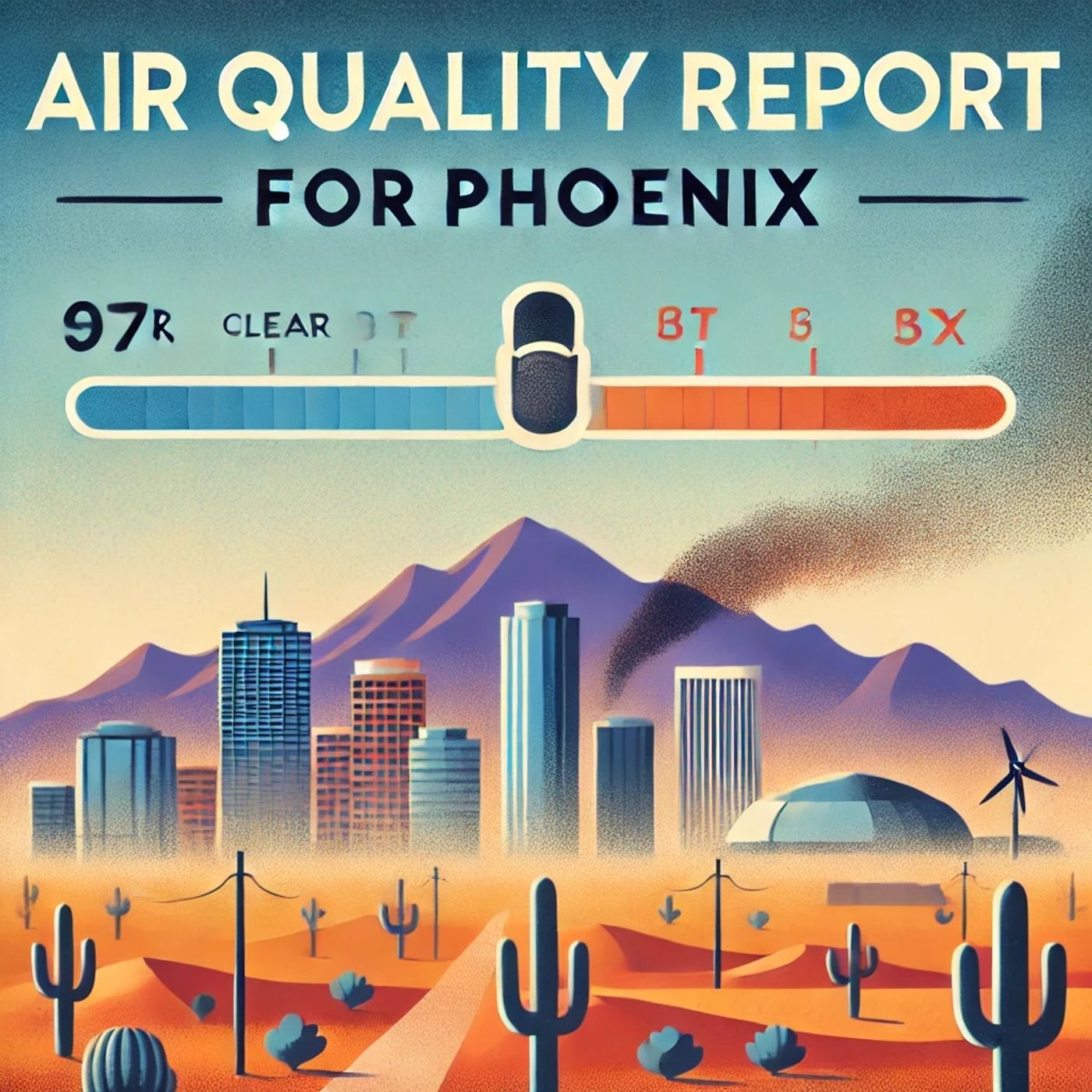Listen "Desert Metropolis Grapples with Air Quality Complexities"
Episode Synopsis
As of today, the air quality in Phoenix reflects the complex interplay of environmental factors that characterize this bustling desert metropolis. Located in the heart of the Sonoran Desert, Phoenix is known for its hot climate and scenic arid landscapes. However, like many urban centers, it faces challenges related to air quality.Today, the Air Quality Index, or AQI, for Phoenix is an important metric for residents and visitors to consider. The AQI provides a quantifiable measure of how clean or polluted the air is, with specific reference to pollutants that pose health risks. The primary contributors to air quality issues in Phoenix include ground-level ozone, particulate matter, and vehicle emissions.Ground-level ozone is one of the principal components of smog and is more prevalent during sunny conditions, as is common in Phoenix. This pollutant emerges from reactions between oxides of nitrogen (NOx) and volatile organic compounds (VOCs) in the presence of sunlight. Today's forecast indicates moderate levels of ozone, suggesting that sensitive groups such as children, the elderly, and individuals with respiratory conditions should limit prolonged outdoor exertion.Particulate matter (PM), particularly PM2.5 and PM10, also contributes to Phoenix's air quality concerns. These tiny particles can penetrate deep into the lungs and even enter the bloodstream, exacerbating health issues such as asthma and heart disease. Dust storms, often influenced by Phoenix's monsoon season, can sporadically elevate particulate matter levels, though today's readings show them within acceptable limits.The city's rapid growth and urbanization have contributed to vehicular emissions being a significant air quality factor. With a vast network of roads accommodating millions of daily commutes, nitrogen oxides and carbon monoxide levels rise due to automobile exhaust. Recent initiatives aim at encouraging public transportation and carpooling can help mitigate these effects, though the outcomes take time to materialize.Temporary weather patterns also play a role in influencing air quality. A temperature inversion, where a layer of warm air traps pollutants closer to the ground, can lead to elevated pollution concentrations. Today, Phoenix does not forecast a significant temperature inversion, which is beneficial for maintaining healthier air quality levels.Efforts by local government agencies, such as Maricopa County Air Quality Department, focus on monitoring air quality and implementing policies to reduce pollution. Public awareness campaigns encourage residents to engage in air-friendly practices and comply with no-burn day restrictions when enacted.In summary, today's air quality in Phoenix, while moderate, illustrates the ongoing efforts and challenges of managing pollution in a growing urban environment. Public awareness and sustainable practices remain key to ensuring that residents can continue to enjoy the beautiful outdoor scenery with minimal health risks associated with air pollution.This content was created in partnership and with the help of Artificial Intelligence AI
More episodes of the podcast Phoenix Air Quality Report - Daily
Phoenix Enjoys Excellent Air Quality Today
23/08/2025
 ZARZA We are Zarza, the prestigious firm behind major projects in information technology.
ZARZA We are Zarza, the prestigious firm behind major projects in information technology.
